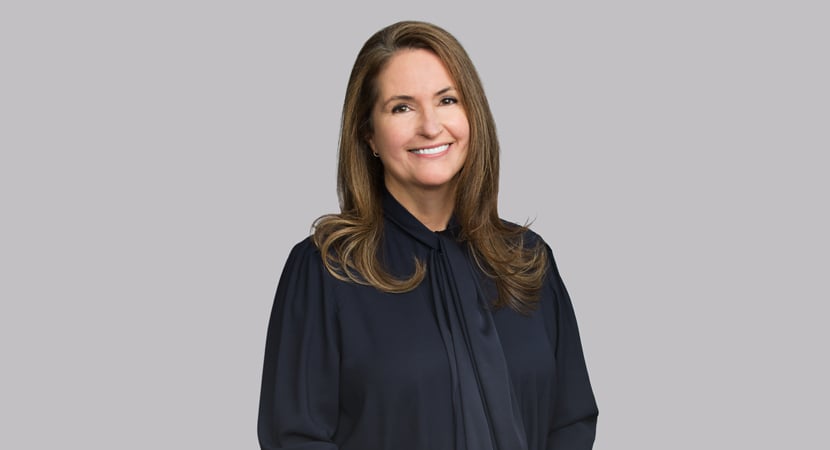Tax Court Finds Family Office’s Expenses Are Deductible
The U.S. Tax Court in December 2017 delivered a ruling that has significant tax implications for family offices. In Lender Management v. Commissioner, T.C. Memo 2017-246 (12/13/17), the Tax Court held that operating expenses incurred by a family office in connection with the management of investments for members of a multigenerational family were deductible as trade or business expenses under Section 162 of the Internal Revenue Code.
The court’s holding was important because expenses incurred by individual taxpayers in connection with the management of their own investments are deductible only as miscellaneous itemized deductions under IRC Section 212. In its 1941 decision in Higgins v. United States, the U.S. Supreme Court held that the management of one’s own investments, no matter how extensive, is not a trade or business.
Before 2018, miscellaneous itemized deductions were of limited benefit because they could be deducted only to the extent they exceeded 2 percent of the taxpayer’s adjusted gross income, were subject to the phaseout of itemized deductions and could not be deducted at all for purposes of computing the alternative minimum tax. Because the expenses incurred by Lender Management LLC were determined by the court to be trade or business expenses, they were deductible in full without any of these limitations.
Beginning in 2018, this distinction takes on even greater importance because miscellaneous itemized deductions are simply no longer deductible.
Family Background
The facts of the Lender case were very favorable to the taxpayer and played a significant role in the court’s decision. Harry Lender founded a successful bagel company known as Lender’s Bagels. Of his five children, his two sons, Marvin and Murray, worked with him in that business and managed it for many years after Harry’s death.
Marvin and his wife had three children — Keith, Sondra and Heidi — and four grandchildren. Murray and his wife also had three children — Carl, Jay and Harris — and six grandchildren. All of Marvin’s and Murray’s children had their own careers, and the children and grandchildren lived in various parts of the United States and, in some cases, other countries. Numerous divorces within the family created considerable tension and conflict that affected the financial affairs of some branches of the Lender family.
Lender Management LLC
Lender Management LLC had been in operation for 25 years by the time this case reached the Tax Court. It was formed and initially owned by the revocable trusts of Marvin Lender, who had a 99 percent interest, and his wife, Helaine Lender, who had a 1 percent interest. Marvin served as the managing member through his trust. On December 23, 2010, Marvin’s son Keith acquired a 99 percent interest in Lender Management by way of an assignment from his father’s trust and his mother’s trust. Marvin’s trust retained a 1 percent interest. Keith also became the managing member through his own trust.
The company provided investment management services for members of the Lender family. The activities of Lender Management were restructured in 2005 from a cost-based model to a profit-based model. At the same time, the investments of the family members were consolidated into three limited liability companies: M & M, Lenco and Lotis. All the members of these LLCs were the children, grandchildren or great-grandchildren of Harry Lender.
Lender Management was the sole manager of each of the three LLCs and directed the investment and management of their assets. M & M invested in private equity, Lenco in hedge funds and Lotis in public equities. Over half of the total invested assets were in private equity. Family members could withdraw part or all of their investments in these LLCs in the event they became dissatisfied with the manner in which they were being managed. The members also could replace Lender Management with another manager.
Lender Management also provided management services to the portfolio companies acquired by M & M. In the case of these private equity investments, M & M did not always acquire 100 percent of the portfolio company, and many had other nonfamily member investors as well. Lender Management received fees from these portfolio companies for its management services.
Compensation to Lender Management
Lender Management received Class A profits interests in varying amounts in each of the three investment LLCs in exchange for the services it provided, but only to the extent that the LLCs generated profits.
From Lenco, it received 1 percent of net asset value annually, plus 5 percent of the year-over-year increase in net asset value. After 2010, these percentages were increased to 2.5 percent and 25 percent, respectively.
From M & M, it received 5 percent of gross receipts and 2 percent of the year-over-year increase in net asset value. This was changed to 2.5 percent of net asset value and 25 percent of the year-over-year increase after 2010.
From Lotis, it received 2 percent of net asset value and 5 percent of net trading profits.
Lender Management also held separate minority interests as an investor in each of these LLCs, as did Keith Lender through the Marvin Lender Family LLC.
Activities of Lender Management
Lender Management made the investment decisions for the three client LLCs. It also provided one-on-one investment advisory and financial planning services for the individual family members. Lender Management had five employees and payroll ranging from $311,000 to $390,000 for the years at issue, and the total operating expenses at issue in the case were in the $1.1 million to $1.2 million range.
Keith, who had an undergraduate business degree and an MBA, served full time as the chief investment officer and president of Lender Management. He worked about 50 hours per week for the company out of rented company offices in New Jersey. The company also maintained an office in Woodbridge, Connecticut, where its chief financial officer, an office manager and occasionally part-time staff worked.
For accounting services, the company retained Harris myCFO and later the spinoff firm, Pathstone Family Office LLC. Pathstone also provided some investment advisory services. Lender Management organized annual meetings for all the family members who were investors in the client LLCs. Some family members would not attend family meetings because of the family conflicts, and in many cases Keith arranged to meet with them individually.
The Tax Dispute
Lender Management deducted its expenses as trade or business expenses under IRC Section 162. Upon audit, the IRS determined that these amounts could be deducted only under IRC Section 212 as expenses incurred in connection with the production of income.
This determination really affected only Keith, who as the 99 percent owner of Lender Management was the only family member who would suffer from having to deduct the operating expenses as miscellaneous itemized deductions rather than trade or business deductions. For the family members who invested in the three client LLCs, the costs those LLCs incurred by way of the profit shares allocated to Lender Management were economically fully deducted because the family member investors were not taxed on the profit shares received by Lender Management.
The Tax Court’s Analysis
As a starting point, the court noted that to constitute a trade or business, the activity must be conducted with continuity and regularity, and the taxpayer’s primary purpose in engaging in the activity must be to generate a profit — tests that both the taxpayer and the IRS agreed were satisfied. The court also noted that based on the Supreme Court cases of Whipple v. Commissioner and Higgins, expenses incurred in managing one’s own investments are considered the work of an investor rather than a trade or business activity.
A significant factor in determining the existence of a business in the investment arena is whether the taxpayer receives income other than a normal investor’s return in the form of compensation for services provided by the taxpayer to others. It does not matter that the taxpayer also invests his own funds along with those of other investors if he is also compensated for the services he provides to those other investors. For this proposition, the court relied on its 2011 decision in Dagres v. Commissioner. At issue in Dagres was whether an individual’s bad-debt deduction was a nonbusiness bad debt (a capital loss) or a business bad debt (ordinary deduction). The court held the bad-debt loss was related to the taxpayer’s business of managing venture capital funds, observing that the fund general partner received compensation in the form of a 20 percent profits interest, which was much more substantial than its 1 percent capital investment.
In Lender, the court determined that Lender Management was engaged in the business of managing investments for members of the extended Lender family and that it did so for the purpose of making a profit. The court distinguished the facts from those in Beals v. Commissioner, where the taxpayer managed investments for himself, his wife and three of his children. In Beals, the court found that there was no business relationship between the taxpayer as the investment manager and the immediate family members whose investments he managed. Lender was different because of the remoteness and differences among the individual members of the extended family, all of whom had different needs and goals and many of whom did not even like each other.
The Importance of the Case
Lender is an important case, primarily for multigenerational family offices that provide services to a significant number of family members whose familial connection may have become remote because of the number of generations involved. While an office managing investments for a single two-generation family is not likely to be considered a trade or business, the family need not be enormous for the Lender holding to apply.
From the reported facts of the case, about 18 family members were clients: Keith’s father, Marvin, Marvin’s children and grandchildren, and Keith’s uncle Murray and his children and grandchildren. Only two branches of the Harry Lender family were involved; Harry had three other children who never utilized the family office. The operation itself was not exceptionally large, as its total operating expenses were around $1 million per year. Many family offices today serve many more family members and have much more extensive infrastructure. These circumstances likely easily satisfy the trade or business test.
Some advisors had expressed concern over whether a pass-through type of entity such as an LLC could generate business deductions for its individual owners for expenses that likely would not be considered business deductions if incurred directly by the individual. This concern arose in part from Treasury Regulations Section 1.67-2T, which provides that an owner of a pass-through entity must treat as a miscellaneous itemized deduction any deduction of the partnership or S corporation that would have been a miscellaneous itemized deduction if incurred directly by the owner of the entity.
Because of these concerns, some family offices are structured as C corporations, which posed additional problems in that any profits earned by the corporation in excess of the costs of maintaining the family office incurred an additional level of taxation at the C-corporation level. Some offices engaged in a variety of manipulations to adjust the size of the profits interest periodically so that the corporation would not generate more than a small profit, which in turn raised other issues, including whether it was engaged in a trade or business at all.
The government did not appeal the decision of the Tax Court, and multigenerational family offices should feel more confident in operating as a pass-through structure, such as the LLC that was used by the Lender family. Whatever form of entity is used for the family office, it should be owned by a limited number of members of the extended family for whom the family office provides services. If all family members have an interest in the family office entity, it will be much easier for a court to conclude that the family members are really just managing their own investments through the office and to deny the entity trade or business status.
Please contact Jordan Klein or Ross Emmerman in Loeb’s Chicago office, or Thomas Lawson in Loeb's Los Angeles Office if you would like to review whether your family office structure and operations are appropriate for profits interest planning.
Profits Interest Planning Post-Lender: Five Key Considerations
Following the Tax Court’s December 2017 decision in Lender Management v. Commissioner, more family offices may seek to qualify for trade or business expense deductions under Section 162 of the Internal Revenue Code through the use of a profits interest structure. This structure is not right for all family offices, however, and requires a careful analysis of both the legal aspects and the unique circumstances of each family office.
Here are five key points to consider in assessing whether profits interest planning is right for your family office:
- Manage family member expectations. Profits interest planning, while efficient from an income tax perspective, can result in a misalignment of family member paradigms and perspectives. Given that profits interests are just that — interests in future profits — there is no guarantee that the annual income associated with a profits interest will match the amount of family office operational expenses.
To the extent that a profits interest causes family office income to exceed expenses, the owners of the family office will benefit, with the possible result that some family members may receive, or be viewed as receiving, an economic benefit at the expense of other family members. If a profits interest causes family office income to be less than expenses, the family office will need additional funding to enable it to satisfy its cash flow needs, with the possible result that some or all family members will be asked to fund this deficit.
These and other potential consequences of a profits interest structure should be carefully explained to family members so that the risk of disrupting a well-functioning family is minimized.
- Fully inform trustees (if applicable). Many family offices are owned by trusts with non-family member trustees or have such trusts as significant clients. As trustees are bound by fiduciary duties, they should be fully informed about all aspects of the proposed profits interest planning and the consequences. Depending on the identity of the family office trustees and other family dynamics, separate counsel may be advisable.
- Work carefully with tax return preparers. There is no standard form of family office ownership structure or profits interest design. The Lender case involved very helpful pro-taxpayer facts. It is imperative to involve the family office’s tax return preparer from the initiation of (and throughout) any profits interest planning exercise. In the end, tax return preparers will not sign the family office income tax returns unless they fully understand and are comfortable with the relevant circumstances.
- Carefully consider ownership and management of family office and related investment entities. A family office that implements profits interest planning should not be an alter ego of the related family investment partnerships. How the family office is owned and managed, both on paper and in reality, is a critical component of profits interest planning. Again, the Lender case facts were very pro-taxpayer; not all family offices will fit this model.
- Remember the big picture. Family offices are unique, and one size does not fit all. As part of a profits interest planning exercise, consider all family facts and circumstances and how they may be affected by the implementation of a profits interest structure. For example, family investment philosophy, family investment management criteria, family cohesion and other factors should be considered before implementing a profits interest structure. In other words, don’t let “the tail wag the dog.”
Recent Events
Loeb’s Chicago office hosted the spring 2018 semiannual meeting of the Family Office Network, a user group of family office executives. The May 8, 2018, meeting included presentations by Loeb partners Thomas Lawson, Ross Emmerman and Jordan Klein on the implications of the Lender Management case and estate, gift and income tax planning strategies in light of recent tax law changes.
-
 Co-Chair, Private Client
Co-Chair, Private Client -
 Partner
Partner -
 Co-Chair, Family Office
Co-Chair, Family Office
)